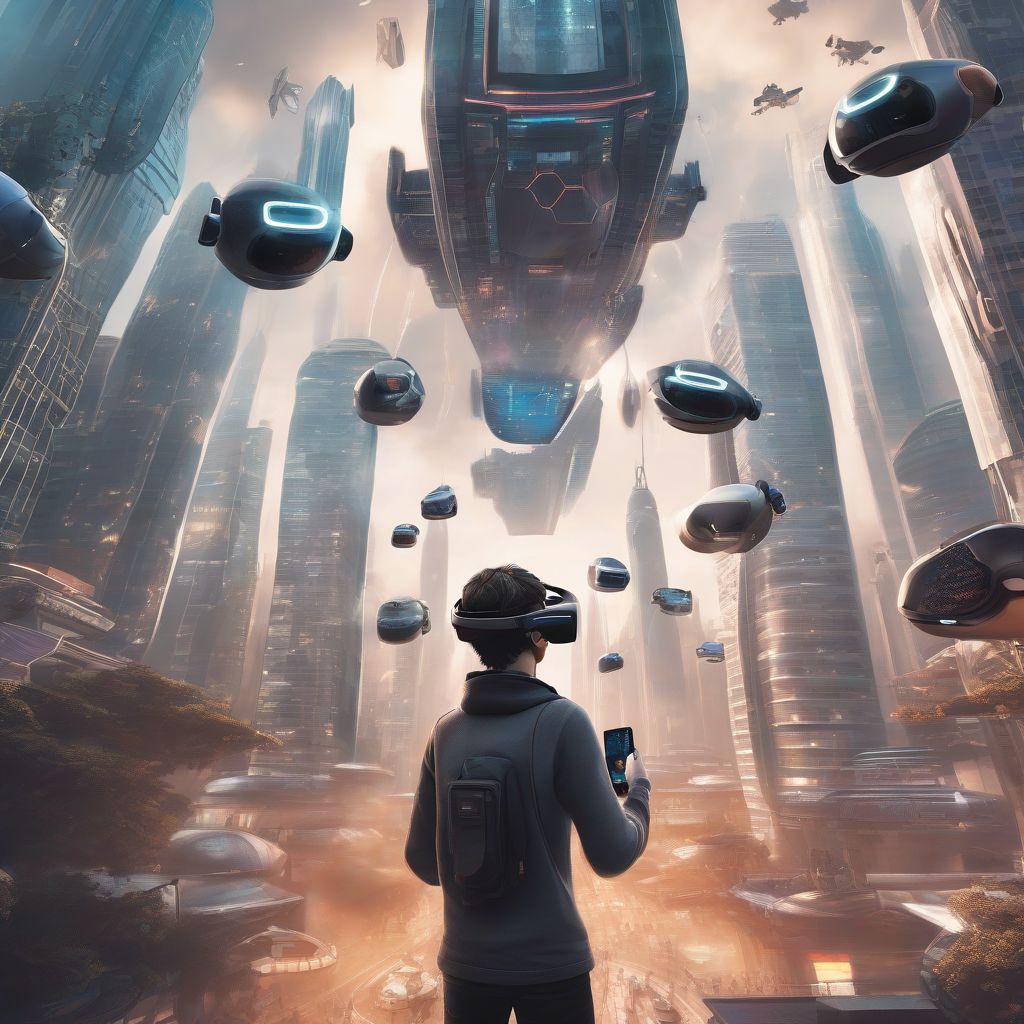Imagine strapping on a headset and stepping into a world indistinguishable from reality. You can feel the wind whipping past your face as you race across a futuristic cityscape, or the clang of your sword as you battle mythical creatures in a forgotten realm. This is the promise of virtual reality (VR) gaming – an experience so immersive and engaging that it transcends the traditional boundaries of entertainment.
While still in its relative infancy, VR gaming has witnessed a surge in popularity, driven by technological advancements and a growing desire for more immersive gaming experiences. However, alongside its vast potential, VR gaming also faces significant challenges that must be overcome for it to reach mainstream adoption and truly revolutionize the industry.
Leveling Up: Opportunities in the VR Gaming Landscape
The allure of VR gaming lies in its ability to transport players into the heart of the action, creating a level of presence and immersion unmatched by traditional gaming platforms. This opens up a world of exciting opportunities for developers and players alike:
1. Unparalleled Immersion and Engagement:
VR’s greatest strength is its capacity to make players feel like they are truly inside the game. By stimulating senses beyond sight and sound, VR creates a profound sense of presence, blurring the lines between the virtual and real world. This heightened immersion translates to increased player engagement, emotional investment, and a deeper connection with the game world.
2. New Gameplay Mechanics and Genres:
VR technology enables developers to explore entirely new gameplay mechanics and genres that capitalize on its unique capabilities. From motion-controlled combat and realistic physics simulations to exploration-based adventures and social VR experiences, the possibilities are limited only by imagination.
3. Expanded Market Reach:
VR gaming has the potential to attract a wider audience beyond traditional gamers. The allure of immersive experiences, educational applications, and virtual tourism can entice individuals who may not typically identify as gamers, broadening the market and fostering wider adoption.
4. A Catalyst for Innovation:
The pursuit of realistic and engaging VR experiences is driving rapid innovation in hardware, software, and game design. From advancements in display technology and motion tracking to the development of intuitive user interfaces and haptics feedback systems, VR is pushing the boundaries of what’s possible in the interactive entertainment space.
 VR Gaming Futuristic City
VR Gaming Futuristic City
Overcoming the Obstacles: Challenges Facing VR Gaming
Despite its immense potential, several significant challenges hinder the widespread adoption of VR gaming:
1. The Price of Entry:
High-quality VR headsets and accompanying hardware (such as powerful gaming PCs) remain expensive, presenting a significant barrier to entry for many gamers. This cost factor limits the potential market size and slows down mainstream adoption.
2. Technical Limitations:
While VR technology has advanced considerably, limitations persist in areas like display resolution, motion sickness, and processing power. These technical hurdles can impact the overall player experience, leading to discomfort, immersion-breaking glitches, or limitations in graphical fidelity.
3. Content is King:
A thriving VR gaming ecosystem requires a steady stream of compelling and diverse content. While the library of VR games is growing, it still lacks the breadth and depth found on established platforms. The development of high-quality VR games is time-consuming, expensive, and requires specialized skills, posing a challenge for studios looking to invest in this emerging market.
4. Accessibility and User Experience:
VR gaming can be physically demanding and require a dedicated play space, limiting its accessibility for some individuals. Furthermore, the user interface and controls in VR games can be unintuitive or cumbersome, leading to frustration for new users.
The Future of VR Gaming: A Balancing Act
The future of VR gaming hinges on the industry’s ability to address the challenges while capitalizing on its unique opportunities. Here are some potential developments that could shape the future of VR gaming:
-
Increased affordability: As technology matures and production costs decrease, VR headsets are likely to become more affordable, making them accessible to a wider audience.
-
Technological advancements: Ongoing innovations in display technology, motion tracking, and haptics feedback will lead to more immersive and realistic VR experiences, mitigating current limitations and pushing the boundaries of what’s possible.
-
Focus on compelling content: As developers become more familiar with the medium, we can expect a surge in innovative and captivating VR games that cater to diverse tastes and preferences.
-
Improved accessibility and user experience: Designers will prioritize intuitive user interfaces, comfortable ergonomics, and adaptable play spaces to make VR gaming more accessible and enjoyable for a wider range of players.
[amazon bestseller=”virtual reality headset”]
Stepping into the Future: A New Dawn for Interactive Entertainment
VR gaming stands at a crossroads, poised to revolutionize the way we play and experience video games. While challenges remain, the potential rewards are too great to ignore. As technology continues to evolve, prices become more accessible, and developers master the art of crafting immersive VR experiences, the immersive frontier of VR gaming promises a future where the line between fantasy and reality blurs, creating a new era of interactive entertainment.
